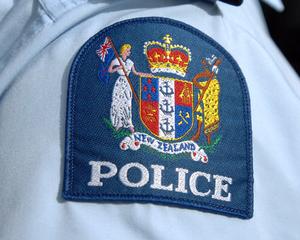Recorded crime has dropped to its lowest level in 15 years, police figures show, and the South is leading the way.
According to police there were 20,289 fewer offences recorded in 2011 than during the previous calendar year, a decrease of 4.8 percent, with 406,056 offences recorded between January 1 and December 31.
After taking into account the 0.8 percent rise in New Zealand's resident population over the same period, the fall in the crime rate for 2011 is 5.6 percent.
The largest decreases were in Canterbury (-22.2 percent), Southern (-13.1 percent), Northland (-10.5 percent), and Bay of Plenty (-5.6 percent). However Auckland City and Waikato saw increases of 8.3 percent and 1.7 percent respectively.
Overall 47 per cent of recorded crimes were resolved.
Homicide and related offending dropped 14.4 percent from last year, down 14 recorded offences from last year. Last year saw the lowest number of murders in a calendar year since 1995, with 39 murders recorded, compared to 46 in 2010.
Reported crime in the Dunedin Clutha Policing Area decreased by 13% in 2011.
Dunedin Clutha Area Commander Inspector Greg Sparrow said that this meant over 1500 fewer offences than in 2010, which means fewer victims of crime.
"An important part of our approach has always been - and always will be - about prevention, achieving results and delivering reductions in crime and crash. This means reducing reported crime and the number of victims, and increasing the amount of resolved crime and reducing road deaths."
In 2011, the number of reported assaults decreased by 9.9% or 129 fewer offences from 1322 to 1193. Total recorded crime in Otago Rural (the local authority areas of Queenstown Lakes, Central Otago and Waitaki) continued its downward trend in 2011.
Otago Rural again recorded further reductions in the total amount of crime reported with a decrease of 17.3 % in the year to 31 December 2011.
The total number of recorded offences in 2011 was 4902, down from 5925 in 2010.
"These figures continue to build on the crime reductions made over the past three years across Otago Rural and reflect the efforts of our staff in conjunction with our communities and partner agencies, in working hard to prevent and reduce crime in our communities," said Inspector Mike Cook, Area Commander, Otago Rural.
Deputy Police Commissioner Mike Bush said the figures show police and the public remain serious about reducing crime, but that New Zealand still has much to do.
"These results show us that we're on the right track with our frontline focus and the work we're doing with communities and other agencies to prevent crime from happening in the first place.
"It just motivates us to do even more to keep the downward trend going. We stay firmly targeted on bringing crime further down across the board."
Canterbury District Commander Superintendent Gary Knowles described the region's drop as "dramatic", and reflected the impacts of the earthquake.
"After both the September 2010 and February 2011 events we noted significant decreases in crime across most types of offending. This was not entirely unexpected, as international research shows that major natural disasters are often followed by a reduction in crime."
A breakdown of the figures:
• Acts intended to cause injury, which are mainly assault-related offences, dropped by 5 percent (down 2,237 offences) in 2011.
• Illicit drug offences reduced by 9.8 percent, from 22,995 to 20,739 offences. The largest reductions were in cannabis (-11.6 percent) and new drugs, mostly methamphetamine (-10.8 percent).
• Theft and related offending, which makes up over 30 percent of all recorded offences, was down by 1,490 offences this year, a 1.1 percent reduction on the previous year. Nationally, 20,724 vehicles were recorded stolen (up by 733) but thefts from cars dropped from 38,669 offences to 38,174.
• Recorded sexual assault and related offences, known to be under reported to police in previous years, rose by 14.9 percent, which means 450 more offences were reported in 2011 than in the previous year.
• Property damage and environmental pollution offences, the majority relating to wilful damage, dropped by 11.1 percent. The decrease may be attributed to higher levels of security in high risk areas, including increased patrols.
• Abduction, harassment and other related offences against a person dropped by 8.5 percent in 2011, and robbery, extortion and related offences dropped by 7.3 percent.
• Offences related to dangerous or negligent acts endangering persons, which makes up less than half a percent of all recorded crime, rose by 14 percent in 2011, an increase of 120 offences from the previous calendar year.






